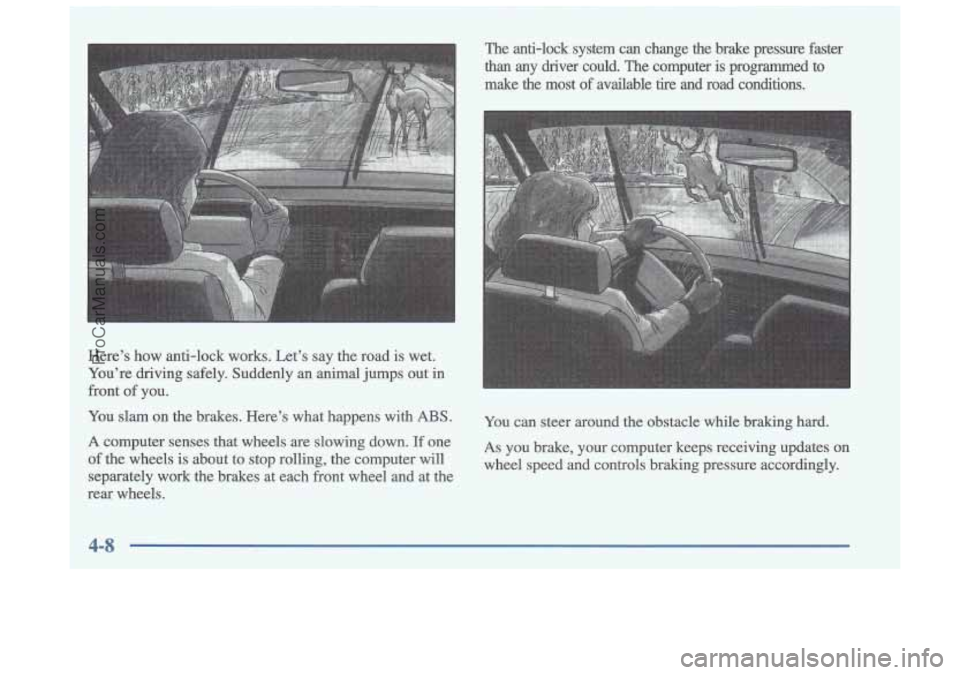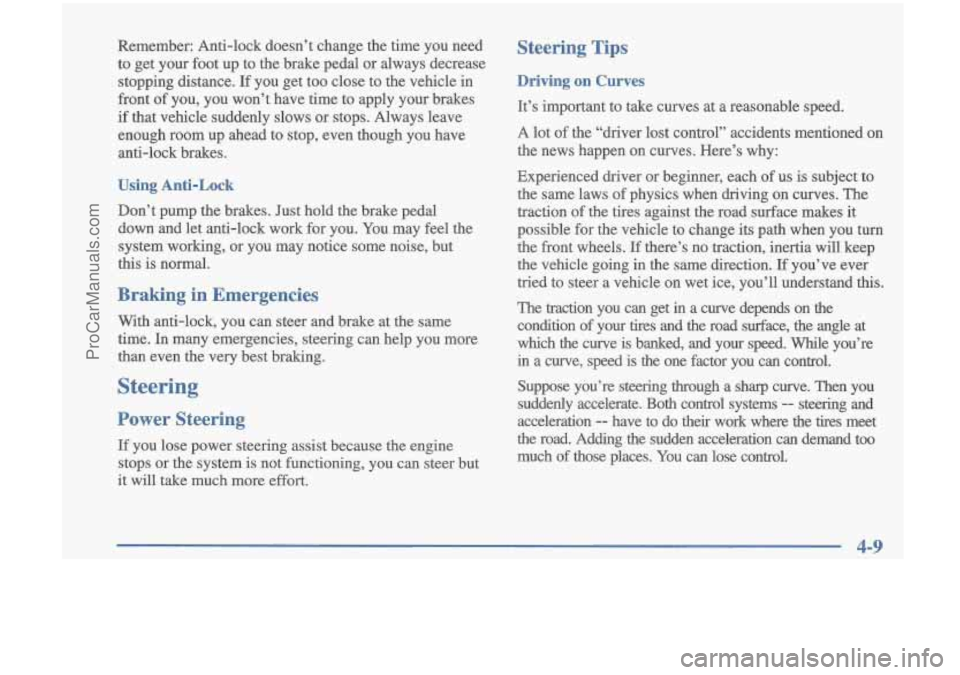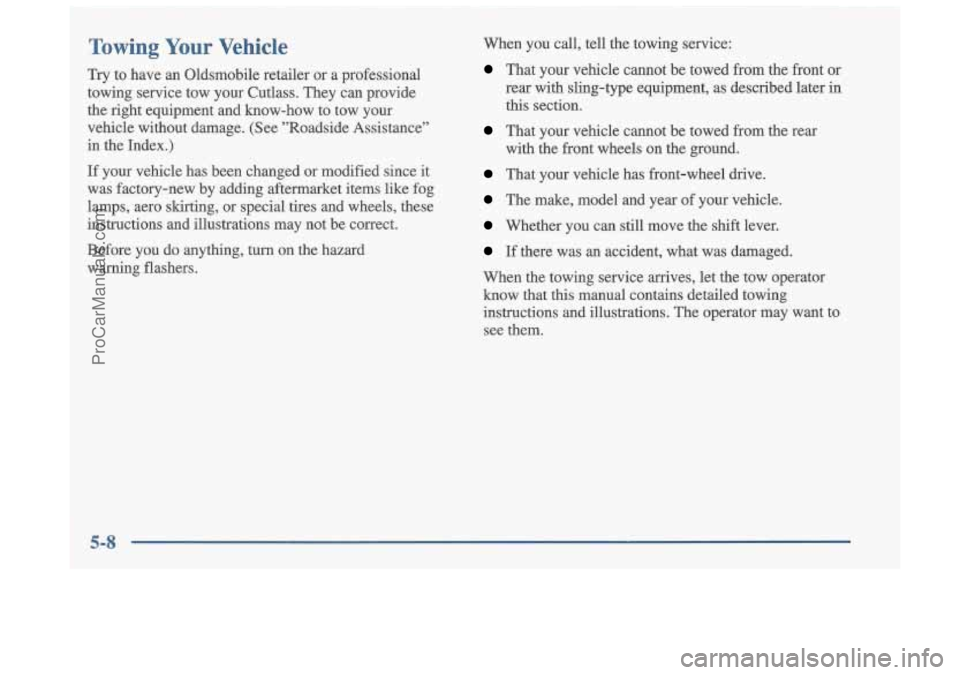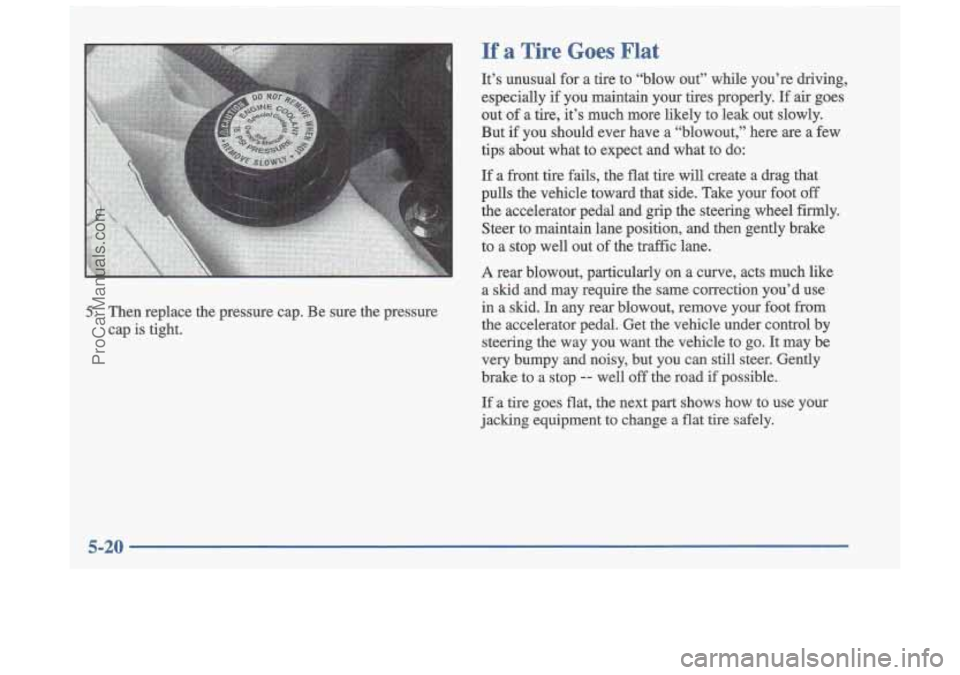1997 OLDSMOBILE CUTLASS change wheel
[x] Cancel search: change wheelPage 58 of 353

Section 2 Features and Controls
2-3
2-4
2-5
2-6
2-8
2-11
2-13
2-13
2- 14
2-
15
2- 17
2-2
1
2-21
2-25
2-26
Here
you can learn about the many standard and optional features on your Oldsmobile, and infomation on starting,
shifting and braking.
Also explained are the instrument panel and the warning systems that tell you if everything is
working properly
-- and what to do if you have a problem.
Important Information About Keys
Door Locks Operation of Child Security Locks
Remote Lock Control
Battery Replacement for Remote
Lock Control
Preventing Theft of Your Vehicle
New Vehicle “Break-In”
Ignition Positions
Tips on Starting Your Engine
Using the Engine Coolant Heater
Automatic Transaxle Operation
Second-Gear Start
Parking Brake Guidelines Important Information on Engine Exhaust
Operation of Your Windows 2-27
2-28
2-29
2-30
2-32
2-35
2-36
2- 37
2-39
2-41
2-45
2-46
2-50 Adjusting
the Tilt Steering Wheel
Functions of the Multifunction Lever
How to Use the High/Low-Beam
Headlamp Changer
Windshield Wipers and Fluid Using Cruise Control
Exterior Lamps
Daytime Running Lamps (Dm) and
Automatic Light Control
(ALC)
Interior Lamps
Rearview Mirrors Storage Compartments
Sunroof
Instrument Panel Overview
All About Your Warning Lights and Gages
2-1
~
ProCarManuals.com
Page 89 of 353

Cruise Control
Cruise control can be dangerous where you
can’t drive safely at
a steady speed. So,
don’t use your cruise control on winding
roads or in heavy traffic.
slippery roads.
On such roads, fast changes
in tire traction can cause needless wheel
spinning, and you could lose control. Don’t
use cruise control on slippery roads.
Cruise control can be dangerous on
With cruise control, you can maintain
a speed of about
25 mph (40 km/h) or more without keeping your foot
on
the accelerator. This can really help on long trips.
Cruise control does
not work at speeds below
25 mph (40 km/h).
When you apply your brake, the cruise control shuts off.
2-32
ProCarManuals.com
Page 153 of 353

Here’s how anti-lock works. Let’s say the road is wet.
You’re driving safely. Suddenly an animal jumps out
in
front of you.
.You slam on the brakes. Here’s what happens with
ABS.
A computer senses that wheels are slowing down. If one
of the wheels is about to stop rolling, the computer will
separately work the brakes at each front wheel and at the
rear wheels. The anti-lock system can change the brake pressure faster
than any driver could. The computer
is programmed to
make the most of available tire and road conditions.
You can steer around the obstacle while braking hard.
As you brake, your computer keeps receiving updates on
wheel speed and controls braking pressure accordingly.
4-8
ProCarManuals.com
Page 154 of 353

Remember: Anti-lock doesn’t change the time you need
to get your foot up to the brake pedal or always decrease
stopping distance. If you get too close to the vehicle in
front
of you, you won’t have time to apply your brakes
if that vehicle suddenly slows or stops. Always leave
enough room up ahead to stop, even though you have
.anti-lock brakes.
Using Anti-Lock
Don’t pump the brakes. Just hold the brake pedal
down and let anti-lock work for you. You may feel the
system working, or you may notice some noise, but
this
is normal.
Braking in Emergencies
With anti-lock, you can steer and brake at the same
time.
In many emergencies, steering can help you more
than even the very best braking.
Steering
Power Steering
If you lose power steering assist because the engine
stops or the system is not functioning, you can steer but
it will take much more effort.
Steering Tips
Driving on Curves
It’s important to take curves at a reasonable speed.
A lot of the “driver lost control” accidents mentioned on
the news happen on curves. Here’s why:
Experienced driver or beginner, each of us is subject to
the same laws of physics when driving on curves. The
traction of the tires against the road surface makes it
possible for the vehicle to change its path when you
turn
the front wheels. If there’s no traction, inertia will keep
the vehicle going in the same direction. If you’ve ever
tried to steer a vehicle on wet ice, you’ll understand this\
.
The traction you can get
in a curve depends on the
condition
of your tires and the road surface, the angle at
which the curve is banked, and yom speed. While you’re
in a curve, speed is the one factor you can control.
Suppose you’re steering through a sharp curve. Then you
suddenly accelerate. Both control systems
-- steering and
acceleration
-- have to do their work where the tires meet
the road. Adding the sudden acceleration can demand too
much
of those places. You can lose control.
4-9
ProCarManuals.com
Page 158 of 353

0
0
0
0
Check your mirrors, glance over your shoulder, and start your left lane change signal before moving out
of the right lane to pass. When you are far enough
ahead of the passed vehicle to see its front in your
inside mirror, activate your right lane change signal
and move back into the right lane. (Remember that
your right outside mirror is convex. The vehicle you
just passed may seem to be farther away from you
than it really is.)
Try not to pass more than one vehicle at a time on
two-lane roads. Reconsider before passing the
next vehicle.
Don’t overtake a slowly moving vehicle too rapidly.
Even though the brake lamps are not flashing, it may
be slowing down or starting to
turn.
If you’re being passed, make
following driver to get ahead
can ease a little to the right. it easy
for the
of you. Perhaps
you
Loss of Control
Let’s review what driving experts say about what
happens when the three control systems (brakes, steering
and acceleration) don’t have enough friction where the
tires meet the road
to do what the driver has asked.
In any emergency, don’t give up. Keep trying to steer and
constantly seek
an escape route or area of less danger.
Skidding
In a skid, a driver can lose control of the vehicle.
Defensive drivers avoid most skids by taking reasonable
care suited to existing conditions, and by not “overdriving”\
those conditions. But skids are always possible.
The three types
of skids correspond to your
Oldsmobile’s three control systems. In the braking
skid,
your wheels aren’t rolling. In the steering or cornering
skid, too much speed or steering
in a curve causes tires
to slip and lose cornering force. And in the acceleration
skid, too much throttle causes the driving wheels to spin.
4-13
ProCarManuals.com
Page 178 of 353

Your vehicle can tow a trailer if it is equipped with the
proper trailer towing equipment.
To identify what the vehicle trailering capacity is for
your vehicle, you should read the information in
“Weight of the Trailer” that appears later in this section.
But trailering is different than just driving your vehicle
by itself. Trailering means changes
in handling,
durability and fuel economy. Successful, safe trailering
takes correct equipment, and it has to be used properly.
That’s the reason for this part. In it are many
time-tested, important trailering tips and safety rules.
Many of these are important for your safety and that of
your passengers.
So please read this section carefully
before you pull a trailer.
Load-pulling components such as the engine, transaxle,
wheel assemblies and tires are forced to work harder
against the drag of the added weight. The engine is
required to operate at relatively higher
speeds^ and under
greater loads, generating extra heat. What’s more, the
trailer adds considerably to wind resistance, increasing
the pulling requirements.
If You Do Decide To Pull A Trailer
If you do, here are some important points:
0
0
0
0
e
There are many different laws, including speed limit
restrictions, having to
do with trailering. Make sure
your rig will be legal, not only where
you live but
also where you’ll be driving.
A good source for this
information can be state or provincial police.
Consider using a sway control. You can ask a hitch
dealer about sway controls.
Don’t tow a trailer at all during the first
1,000 miles
(1 600 km) your new vehicle is driven. Your engine,
axle or other parts could be damaged.
Then, during the first
500 miles (800 krn) that you
tow a trailer, don’t drive over
50 mph (80 km/h) and
don’t make starts at full throttle.
This helps your
engine and other parts of your vehicle wear
in at the
heavier loads.
Obey speed limit restrictions when towing a trailer.
Don’t drive faster than the maximum posted speed
for trailers (or no more than
55 mph (90 km/h)) to
save wear on your vehicle’s parts.
4-33
ProCarManuals.com
Page 195 of 353

Towing Your Vehicle
Try to have an Oldsmobile retailer or a professional
towing service tow your Cutlass. They can provide
the right equipment and know-how to tow your
vehicle without damage. (See "Roadside Assistance"
in the Index.)
If your vehicle hasbeen changed or modified since it
was factory-new by adding aftermarket items like fog
lamps, aero skirting, or special tires and wheels, these
instructions and illustrations may not be correct.
Before you do anything,
turn on the hazard
warning flashers. When you call,
tell the towing service:
That your vehicle cannot be towed from the front or
rear with sling-type equipment, as described later
in
this section.
That your vehicle cannot be towed from the rear
with the front wheels on the ground.
That your vehicle has front-wheel drive.
The make, model and year of your vehicle.
Whether you can still move the shift lever.
If there was an accident, what was damaged.
When the towing service arrives, let the tow operator
know that this manual contains detailed towing
instructions and illustrations. The operator may want to
see them.
ProCarManuals.com
Page 207 of 353

5. Then replace the pressure cap. Be sure the pressure
cap is tight.
If a Tire Goes Flat
It’s unusual for a tire to “blow out” while you’re driving,
especially if you maintain your tires properly. If air goes
out of a tire, it’s much more likely to leak out slowly.
But if you should ever have a “blowout,” here are a few\
tips about what to expect and what to do:
If a front tire
fails, the flat tire will create a drag that
pulls the vehicle toward that side. Take your foot
off
the accelerator pedal and grip the steering wheel firmly.
Steer to maintain lane position, and then gently brake
to a stop well out of the traffic lane.
A rear blowout, particularly on a curve, acts much like
a skid and may require the same correction you’d use
in a skid. In any rear blowout, remove your foot from
the accelerator pedal. Get the vehicle under control by
steering the way you want the vehicle to go. It may be
very bumpy and noisy, but you can still steer. Gently
brake to a stop
-- well off the road if possible.
If a tire goes flat, the next part shows how to use your
jacking equipment to change a flat tire safely.
5-20
ProCarManuals.com